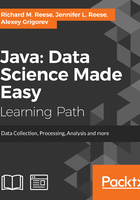
Data Cleaning
Real-world data is frequently dirty and unstructured, and must be reworked before it is usable. Data may contain errors, have duplicate entries, exist in the wrong format, or be inconsistent. The process of addressing these types of issues is called data cleaning. Data cleaning is also referred to as data wrangling, massaging, reshaping , or munging. Data merging, where data from multiple sources is combined, is often considered to be a data cleaning activity.
We need to clean data because any analysis based on inaccurate data can produce misleading results. We want to ensure that the data we work with is quality data. Data quality involves:
- Validity: Ensuring that the data possesses the correct form or structure
- Accuracy:Â The values within the data are truly representative of the dataset
- Completeness: There are no missing elements
- Consistency: Changes to data are in sync
- Uniformity: The same units of measurement are used
There are several techniques and tools used to clean data. We will examine the following approaches:
- Handling different types of data
- Cleaning and manipulating text data
- Filling in missing data
- Validating data
In addition, we will briefly examine several image enhancement techniques.
There are often many ways to accomplish the same cleaning task. For example, there are a number of GUI tools that support data cleaning, such as OpenRefine (http://openrefine.org/). This tool allows a user to read in a dataset and clean it using a variety of techniques. However, it requires a user to interact with the application for each dataset that needs to be cleaned. It is not conducive to automation.
We will focus on how to clean data using Java code. Even then, there may be different techniques to clean the data. We will show multiple approaches to provide the reader with insights on how it can be done. Sometimes, this will use core Java string classes, and at other time, it may use specialized libraries.
These libraries often are more expressive and efficient. However, there are times when using a simple string function is more than adequate to address the problem. Showing complimentary techniques will improve the reader's skill set.
The basic text based tasks include:
- Data transformation
- Data imputation (handling missing data)
- Subsetting data
- Sorting data
- Validating data
In this chapter, we are interested in cleaning data. However, part of this process is extracting information from various data sources. The data may be stored in plaintext or in binary form. We need to understand the various formats used to store data before we can begin the cleaning process. Many of these formats were introduced in Chapter 2, Data Acquisition, but we will go into greater detail in the following sections.